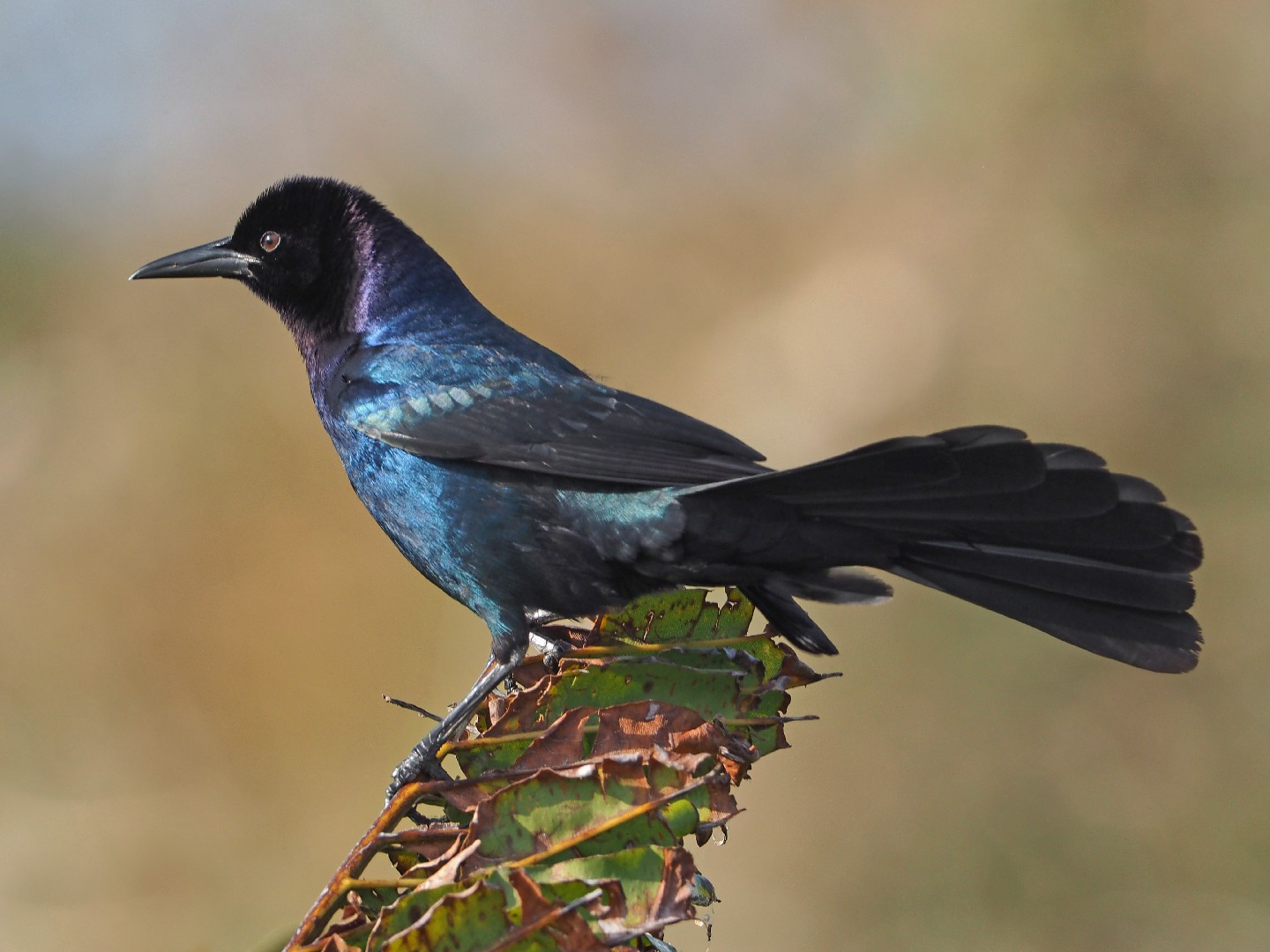Boat-tailed Grackle
A species of Grackles Scientific name : Quiscalus major Genus : Grackles
Boat-tailed Grackle, A species of Grackles
Botanical name: Quiscalus major
Genus: Grackles
Content
Description People often ask General Info
Description
Boat-tailed Grackles, with their incredibly long tails, prefer to live near marshes and boat launches. Those found in different regions have different colored eyes. Boat-tailed Grackles have an unusual way of mating called "harem defense polygyny" in which females nest in a cluster colony together as males compete to mate and defend ALL of the females.
Size
26 - 37 cm
Life Expectancy
11 years
Nest Placement
Tree
Clutch Size
1 - 5 eggs
Incubation Period
1 - 2 broods
Number of Broods
13 days
Nestling Period
13 days
Feeding Habits
Boat-tailed Grackle consume a varied diet that includes arthropods, crustaceans, mollusks, amphibians, reptiles, grains, seeds, fruit, and tubers. They scavenge, pirate from others, and forage in diverse environments, overturning debris to find food. They use their bills to pry open shells and may soak hard food in water before consumption.
Habitat
The boat-tailed Grackle thrives in coastal environments, predominantly inhabiting marshes, beaches, and areas adjacent to the shore. They prefer low altitude settings with a climate suitable for both salt and freshwater marshlands. Vegetation within these marshes, alongside riverbanks, and near man-made water bodies provides an ideal habitat. Within Florida, the boat-tailed Grackle extends its range to include inland regions. This bird also utilizes urban landscapes for foraging, such as city streets and cultivated fields, retaining a preference for proximity to saltwater sources.
Nest Behavior
Females solely build the nest in 8 days, typically in secure locations to protect from predators and floods. Boat-tailed Grackle exhibit elaborate nest building and care for their eggs and offspring with dedication in their selected nesting spots.
Nest Characteristics
Boat-tailed Grackle nests are built about 2 feet above ground in marshes, or up to 13 feet in trees like live oak or mangroves. The nest comprises a platform of grass stems or Spanish moss, with a grass and leaf outer cup, a mud and debris inner cup, and fine lining of pine needles.
Dite type
Omnivorous
People often ask
General Info
Feeding Habits
Bird food type
Bird Feeder Type

Platform

Large Hopper
Behavior
The boat-tailed Grackle displays gregarious and communal roosting in tall grasses throughout the year. During breeding season, males exhibit a unique North American harem mating system, where high-ranked individuals defend and mate with multiple females, while lower-ranked males may mate surreptitiously. Daily activities include foraging behaviors adaptive to human presence, such as scavenging in dumpsters, and nesting in areas like traffic islands for predator protection. Boat-tailed Grackle chiefly contend with predators like yellow rat snakes targeting their nests, as well as various rat species, alligators, and Purple Gallinules.
